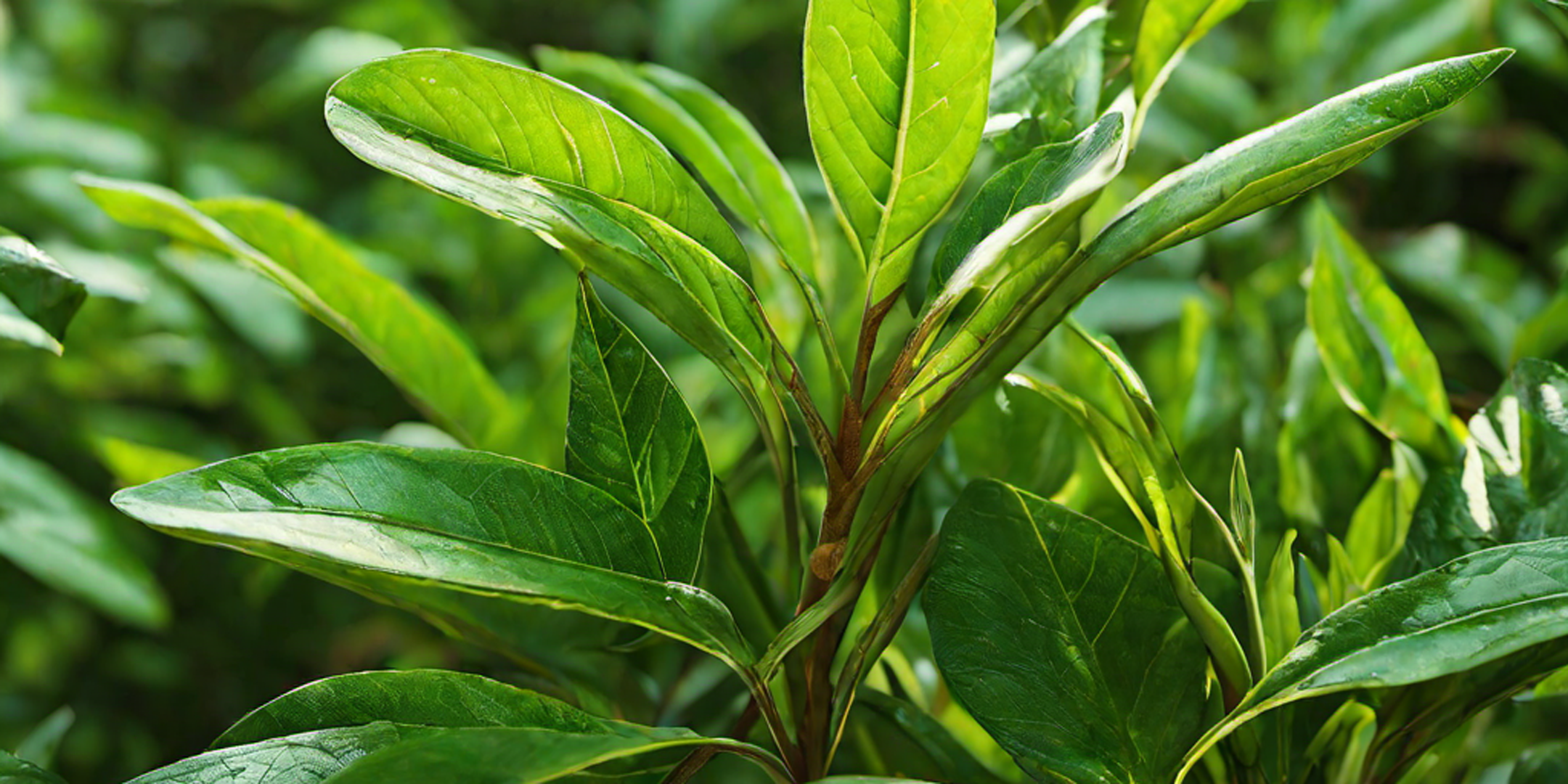Welcome to the world of loose leaf tea, where the art of sipping becomes an exquisite experience. In this quick guide, we will unravel the secrets of enjoying loose leaf tea like a pro. Whether you're a tea connoisseur or new to the scene, this article is your key to unlocking a world of flavors and aromas.
Stepping away from the pre-packaged tea bags, loose leaf tea offers a more immersive and personalized experience. Every cup is a reflection of the unique blend and craftsmanship behind each tea leaf. From the moment you steep the leaves to the first sip, indulging in loose leaf tea is a journey that stimulates the senses.
In this article, we will dive into the essential steps that will elevate your tea-drinking ritual. Discover the correct steeping times and temperatures for different types of tea, understand the importance of water quality, and learn how to appreciate the nuanced flavors by engaging all your senses.
Join us on this tea adventure as we uncover the art of sipping loose leaf tea. Get ready to elevate your tea-drinking experience and become a pro in no time.
Benefits of Drinking Loose Leaf Tea
When it comes to tea, loose leaf offers numerous benefits over pre-packaged tea bags. Firstly, loose leaf tea allows the leaves to unfurl completely during steeping, resulting in a more flavorful cup. Loose leaves offer a larger surface area, which facilitates the extraction of essential oils, flavors, and aromas during brewing. This means you get a richer, more complex taste that is often lacking in tea bags.
Loose leaf tea is often of higher quality as well. Many tea bags contain broken leaves or dust, which can affect the overall taste and aroma. Loose leaf teas are typically made from whole leaves that are carefully selected and processed, ensuring a superior tea-drinking experience. By opting for loose leaf tea, you have the opportunity to explore a wide range of flavors and blends, from delicate white teas to robust black teas.
Furthermore, loose leaf tea offers a more sustainable choice. Most tea bags are made from non-biodegradable materials, such as nylon or polyester, which can take years to decompose. By brewing loose leaf tea, you can reduce your environmental impact and enjoy a more natural and eco-friendly tea-drinking experience.
Types of Loose Leaf Tea
Loose leaf tea comes in a variety of types, each with its own unique characteristics. Some of the popular types of loose leaf tea:
Green Tea: Known for its fresh and grassy flavor, green tea is unoxidized and retains its vibrant green color. It offers a range of health benefits and is often enjoyed for its delicate taste.
Black Tea: Fully oxidized, black tea is robust and full-bodied. It is known for its bold flavors and is often enjoyed with milk and sugar. Black tea is a staple in many breakfast blends and is a great choice for those seeking a strong cup of tea.
Oolong Tea: Falling between green and black tea, oolong tea is partially oxidized. It presents a variety of flavors, spanning from floral and fruity to toasty and nutty. Oolong tea is often enjoyed for its complex taste and enticing aroma.
White Tea: Made from young tea buds and leaves, white tea is the least processed of all teas. It has a delicate and subtle flavor, often described as floral or honey-like. White tea is prized for its high levels of antioxidants and is a popular choice among tea enthusiasts.
Herbal Tea: Herbal teas are made from a variety of herbs, flowers, fruits, and spices, unlike traditional tea, which comes from the Camellia sinensis plant. Herbal teas provide a diverse array of flavors and are frequently appreciated for their soothing and calming characteristics.
These are just a few examples of the many types of loose leaf tea available. Each type offers its own unique taste profile, allowing you to find the perfect tea to suit your preferences.
How to Choose High-Quality Loose Leaf Tea
Choosing high-quality loose leaf tea is essential for a truly enjoyable tea-drinking experience. Some tips to help you select the best tea:
Look for Whole Leaves: Opt for loose leaf teas that are made from whole leaves rather than broken leaves or dust. Whole leaves provide a more nuanced flavor and aroma.
Check the Harvest Date: Freshness is key when it comes to loose leaf tea. Check the harvest date, if available, to ensure you're getting the freshest tea possible. Fresher tea tends to have a more vibrant taste.
Consider the Source: Pay attention to where the tea is sourced from. Different regions produce teas with distinct characteristics. For example, a Chinese green tea may have a different taste profile than a Japanese green tea.
Read Reviews: Before making a purchase, read reviews from reputable sources or fellow tea enthusiasts. This can give you insights into the flavor, aroma, and overall quality of the tea.
By following these guidelines, you can ensure that you're selecting high-quality loose leaf tea that will deliver a truly satisfying tea-drinking experience.
Brewing Methods for Loose Leaf Tea
Brewing loose leaf tea requires a bit more effort than simply steeping a tea bag, but the results are well worth it. Here are a few popular brewing methods to help you get started:
The Infuser Method: This is the most common method for brewing loose leaf tea. Simply place the desired amount of tea leaves in an infuser or strainer, and then place it in a cup or teapot. Pour hot water over the leaves and allow them to steep for the recommended duration.
- The Teapot Method: If you prefer to make a larger batch of tea, using a teapot is a great option. Add the desired amount of tea leaves to the teapot, and then pour hot water over them. Let the tea steep for the recommended time, and then pour it into cups for serving.
- The Gongfu Method: This traditional Chinese brewing method is ideal for oolong and pu-erh teas. It involves multiple short steepings using a small teapot or gaiwan. The tea leaves are steeped for a short time, allowing you to fully appreciate the evolving flavors with each infusion.
Experiment with different brewing methods to find the one that suits your preferences and allows you to fully enjoy the flavors and aromas of your loose leaf tea.
Essential Tools for Brewing Loose Leaf Tea
To fully embrace the art of sipping loose leaf tea, it's important to have the right tools on hand. Here are some essential items for brewing loose leaf tea:
- Tea Infuser or Strainer: An infuser or strainer is crucial for steeping loose leaf tea. It allows the water to flow through the tea leaves while keeping them contained, ensuring a smooth and flavorful cup of tea.
- Tea Pot: A teapot is a versatile tool for brewing loose leaf tea. It allows you to make larger batches of tea and keeps the tea warm for longer periods.
- Tea Cups: Invest in a set of tea cups that are designed to enhance the tea-drinking experience. Look for cups with thin walls that allow you to appreciate the color and aroma of the tea.
- Tea Timer: Steeping times vary depending on the type of tea you're brewing. A tea timer can help you keep track of the steeping time and ensure that you're extracting the optimal flavors from your tea leaves.
- Water Kettle: A kettle with temperature control is essential for brewing loose leaf tea. Different types of tea require different water temperatures, and having a kettle that allows you to adjust the temperature ensures that you're brewing your tea at the optimal temperature.
By having these essential tools on hand, you can create the perfect brewing environment and fully appreciate the flavors and aromas of your loose leaf tea.
Tips for Steeping the Perfect Cup of Loose Leaf Tea
Steeping loose leaf tea requires a bit of precision to achieve the perfect cup. Here are some tips to help you steep your tea like a pro:
- Measure the Right Amount: Use a digital scale or a measuring spoon to ensure you're using the correct amount of tea leaves. The recommended ratio is typically 1 teaspoon of tea leaves per 8 ounces of water.
- Control Water Temperature: Different types of tea require different water temperatures. Use a thermometer or a kettle with temperature control to heat the water to the optimal temperature for your specific tea.
- Steep for the Right Time: Follow the recommended steeping time for your tea. Oversteeping can result in a bitter taste, while understeeping may leave your tea lacking in flavor. Use a timer to monitor the steeping duration accurately.
- Use Filtered Water: The quality of water used for brewing tea can greatly affect the taste. For optimal outcomes, opt for filtered or spring water when brewing tea. Avoid using distilled water as it may result in a flat-tasting tea.
- Re-Steep Tea Leaves: Don't throw away your tea leaves after the first steep. Many loose leaf teas can be steeped multiple times, each infusion offering a slightly different flavor profile. Experiment with re-steeping to fully explore the nuances of your tea.
By following these tips, you can ensure that each cup of loose leaf tea is brewed to perfection, allowing you to fully enjoy the flavors and aromas of your tea.
Pairing Loose Leaf Tea with Food
Just like wine, loose leaf tea can be paired with food to enhance the flavors of both. Here are some general guidelines for pairing loose leaf tea with food:
- Green Tea: Light and delicate, green teas pair well with seafood, salads, and light desserts. The fresh and grassy flavors of green tea complement the subtle flavors of these dishes.
- Black Tea: Robust and full-bodied, black teas are a great match for hearty dishes and rich desserts. They can stand up to strong flavors and provide a nice contrast to rich and indulgent foods.
- Oolong Tea: With its wide range of flavors, oolong tea can be paired with a variety of foods. Floral oolongs go well with Asian cuisine, while toasty oolongs complement grilled meats and roasted vegetables.
- White Tea: Subtle and delicate, white teas pair well with light and fresh dishes. They are often enjoyed with fruits, salads, and light pastries.
- Herbal Tea: Since herbal teas come in a variety of flavors, they can be paired with a wide range of foods. Chamomile and peppermint teas are often enjoyed after meals to aid digestion, while fruity herbal teas can be paired with desserts.
Remember, these are just general guidelines, and personal preference plays a significant role in tea and food pairing. Try out various combinations until you discover the ideal blend for your taste preferences.
Exploring Different Flavors and Blends of Loose Leaf Tea
One of the joys of loose leaf tea is the endless variety of flavors and blends available. Here are some popular flavors and blends to explore:
- Earl Grey: This classic black tea is flavored with bergamot oil, resulting in a citrusy and floral taste. Earl Grey is often enjoyed with a splash of milk and a touch of sweetener.
- Jasmine Green Tea: Fragrant and floral, jasmine green tea is scented with jasmine blossoms. It offers a delicate and refreshing taste that is perfect for relaxation.
- Chai Tea: A blend of black tea and spices, chai tea is known for its warming and aromatic qualities. It's commonly served with milk and sweetened with honey or sugar.
- Matcha: A powdered form of green tea, matcha is rich in flavor and vibrant in color. It is often used in traditional tea ceremonies and can be enjoyed on its own or used as an ingredient in various recipes, such as matcha lattes or desserts.
These are just a few examples of the many flavors and blends available in the world of loose leaf tea. Take the time to explore different varieties and find the ones that resonate with your taste buds.
Conclusion
Loose leaf tea offers a world of flavors, aromas, and experiences that cannot be replicated by pre-packaged tea bags. By following the steps outlined in this guide, you can elevate your tea-drinking ritual and fully appreciate the art of sipping loose leaf tea like a pro.
Remember to choose high-quality loose leaf tea, experiment with different brewing methods, and engage all your senses to fully enjoy the flavors and aromas of your tea. Pair loose leaf tea with food to create a harmonious dining experience, and explore different flavors and blends to expand your tea horizons.
So, go ahead and embark on this tea adventure. Discover the wonders of loose leaf tea and let each sip transport you to a world of taste and tranquility. With a little practice, you'll soon be sipping like a pro and delighting in the art of enjoying loose leaf tea.




